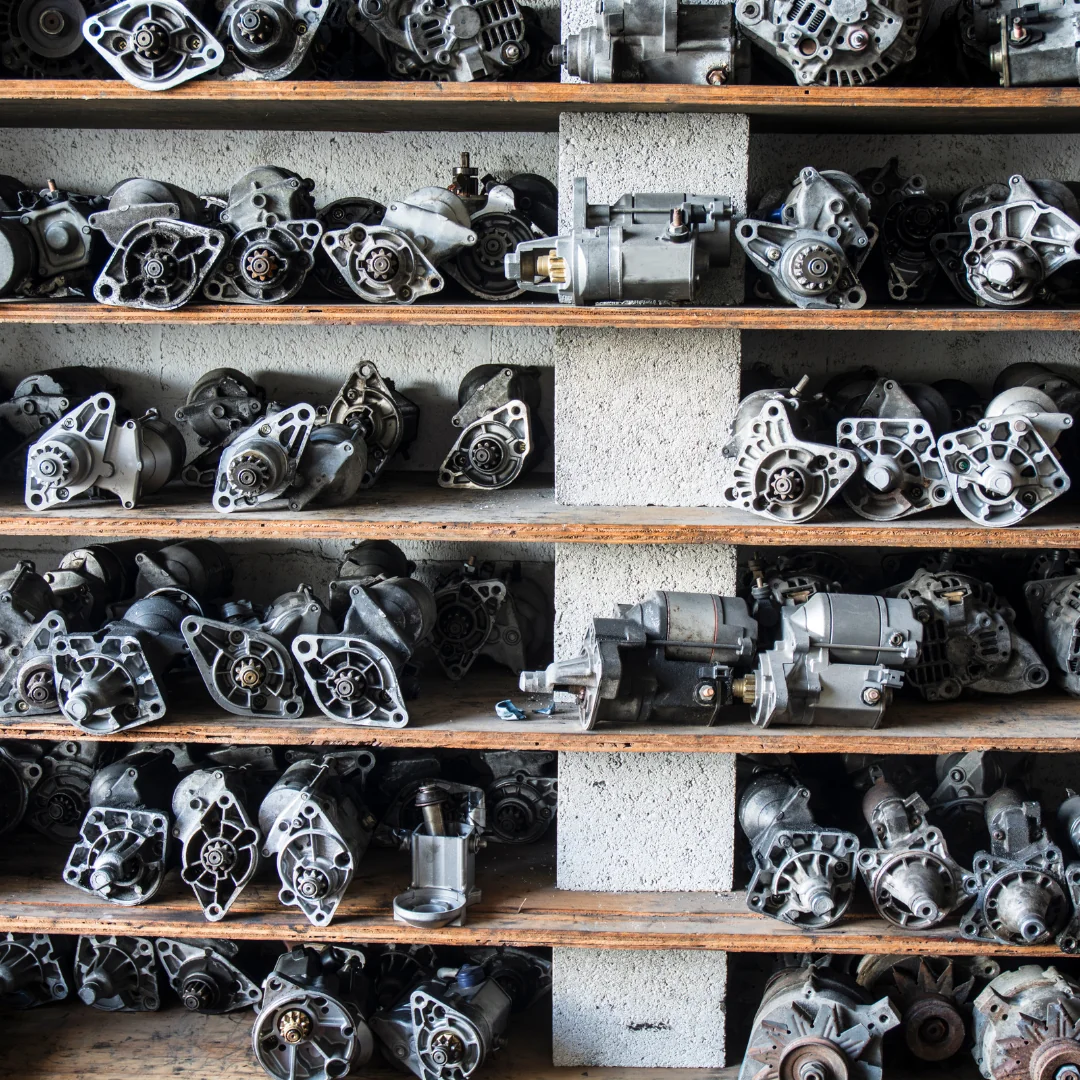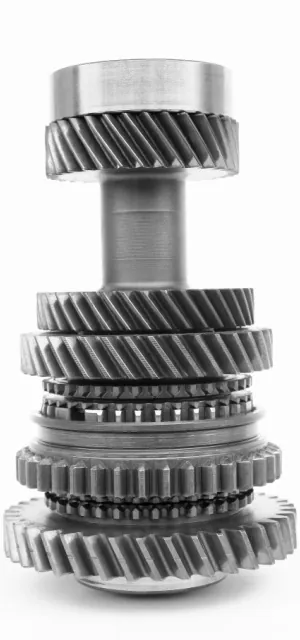
Shipping Auto Parts
When your automotive vehicle parts or auto body parts need to be shipped as freight, FreightCenter can schedule delivery and pick up to save you time and money.
Shipping Auto Parts or Auto Body Parts
Whether you are a manufacturer shipping car hoods or any other auto body part on a regular basis or someone looking to rebuild that classic vehicle, you need freight shipping services that safely transport your auto parts. Many large auto parts have special handling requirements making freight the only way to transport large automobile parts. FreightCenter is the expert when you are looking to ship or receive any parts for your vehicle. Get an instant quote to ship auto parts right here.
Why Choose FreightCenter For Your Shipping Needs?
- Shipping Quotes anytime
- Get Freight Shipping Quotes to anywhere in the U.S. & Canada.
- Unbeatable discounts on your freight LTL, truckload, rail, air, and more
- Automated Freight tracking, paperwork & invoices
- Manage all quotes & shipments in one place
- 24+ years of logistics experience working for you!
- Auto Parts Shipping Specialists:
Thousands of businesses trust FreightCenter to move their freight faster, smarter, and cheaper! From unbeatable rates to top-notch service, our customers are raving about their shipping success.
See why they keep coming back!
Award-Winning Service, Trusted by Shippers Everywhere!
- 2021, 2017 & 2016 Food Logistics’ Top Green Providers
- 2021 & 2018 Supply & Demand Chain Executives’ Pros to Know: Matthew Brosious
- 2020 & 2019 Top Food Logistics’ 3PL & Cold Storage Provider Award
- 2020 & 2019 Business Observer’s Top 500 Companies on the Gulf Coast
- 2020 & 2017 SmartWay® Transport Partner
- 2020 & 2017 Food Logistics’ Champions: Rock Stars of the Supply Chain
- 2020 Best of Palm Harbor Awards for Local Businesses
- 2017 Green Supply Chain Award from Supply & Demand Chain Executive
- 2017 Tampa Bay Business Journal Heroes at Work
- 2016, 2015, & 2012 Food Logistics Top 100 Software and Technology Providers
- 2013 Tampa Bay Business 100 by Tampa Bay Business Journal
- 2013 Top 100 Great Supply Chain Partners by SupplyChainBrain
- 2012 TIA Samaritan Award Honorable Mention
- 2012, 2011 & 2010 TBBJ Fast 50 Recipient
- 2013, 2011, & 2010 Diversity Business Top Businesses

Why Choose FreightCenter to Ship Auto Parts?
At FreightCenter, we believe choosing us to ship your auto parts has numerous benefits and advantages. Here’s why you should consider working with us:
Expertise in Auto Parts Shipping: We specialize in shipping auto parts and have extensive experience handling these shipments. We understand the unique requirements and challenges of shipping delicate and often bulky auto parts.
Wide Network of Carriers: We have a vast network of reputable carriers, including LTL (Less Than Truckload) and truckload carriers. This allows us to offer competitive rates and find the most suitable carrier for your shipment needs.
Cost Savings: Our extensive carrier network enables us to negotiate competitive rates, providing you with cost savings on your auto parts shipping. We compare rates from multiple carriers and present you with the most cost-effective options.
Easy Online Quoting and Booking: Our intuitive online platform lets you obtain instant shipment quotes. You can easily compare rates, select the best option, and book your shipment online without the need for lengthy phone calls or negotiations.
Freight Expert Assistance: Our team of freight experts is available to provide guidance and support. If you have any questions or need assistance with your shipment, we’re here to help you navigate any complexities and ensure a smooth shipping experience.
Tracking and Visibility: We provide tracking and visibility tools that allow you to monitor the progress of your shipment in real time. You can easily track your auto parts from pickup to delivery, ensuring transparency and peace of mind.
Insurance Options: We offer insurance options to protect your auto parts during transit. This provides added security and financial coverage in the unlikely event of any damages or loss.
Streamlined Freight Management: By partnering with us, you can simplify your auto parts shipping process. We handle the logistics, paperwork, and coordination with carriers, allowing you to focus on other aspects of your business.
While FreightCenter offers many advantages for shipping auto parts, we encourage you to evaluate multiple shipping providers and compare their services, rates, and customer reviews to make an informed decision that aligns with your specific requirements.
Why Are So Many Auto Parts Shipped?
Shipping car parts is of utmost importance in various aspects of the automotive industry and the overall functioning of vehicles. It enables a streamlined supply chain, ensuring an efficient flow of components and supplies. Moreover, it facilitates vehicle repair and maintenance, allowing mechanics and individuals to readily access the necessary parts for keeping vehicles in optimal condition. Manufacturers, suppliers, and dealers rely on timely delivery to maintain production and inventory management.
The accessibility of shipping car parts is crucial, enabling businesses and consumers to access a wide range of components regardless of geographic location. This is particularly beneficial when specialized or rare parts are required. Shipping enables the availability of parts from different regions, expanding repair and customization options. Cost-effectiveness is another advantage of shipping car parts. By leveraging global markets, businesses can find competitive prices for quality components, leading to cost-effective repairs and maintenance. Consumers also benefit from the ability to compare prices and access affordable options when purchasing car parts online.
Shipping ensures a diverse selection of components, ensuring compatibility with different vehicle makes, models, and years. This variety allows businesses and consumers to find the parts they need, whether OEM parts, aftermarket components, or specialty items. Furthermore, shipping car parts is vital in vehicle customization and performance upgrades. Enthusiasts and automotive professionals rely on shipping to access a wide range of aftermarket parts and accessories, allowing them to personalize vehicles, enhance performance, and optimize functionality.
Efficient shipping processes support manufacturers, suppliers, and distributors in meeting market demands, introducing new products, and driving advancements in technology and design. The shipping of car parts also drives industry growth and innovation. It fosters a dynamic industry ecosystem and promotes continuous improvement. Additionally, shipping car parts contributes to international trade and export. It enables businesses to expand their market reach and supply products to customers worldwide. This stimulates economic growth, job creation, and cross-border collaborations within the automotive sector.
Shipping car parts is essential for the efficient functioning of the automotive industry, vehicle repairs and maintenance, cost-effectiveness, customization, industry growth, and global accessibility. It ensures the availability and accessibility of components, contributing to the overall performance and reliability of vehicles.
How To Get The Best Shipping Rates
Getting the best shipping rate when shipping auto parts requires careful consideration and proactive measures. Follow these steps to increase your chances of securing the most favorable shipping rate:
Research Multiple Shipping Providers: Take the time to research and compare rates from different shipping providers. Look for companies that specialize in shipping auto parts or have experience in the automotive industry. Consider factors such as reputation, reliability, and customer reviews.
Provide Accurate Information: Ensure that you provide accurate and detailed information about your auto parts shipment. This includes the dimensions, weight, quantity, and any special handling requirements. Inaccurate information can lead to unexpected surcharges or delays, affecting the final shipping rate.
Package Efficiently: Proper packaging is crucial in reducing shipping costs. Use packaging materials that provide adequate protection while keeping the weight and dimensions of the package to a minimum. Efficient packaging can help you avoid dimensional weight charges and lower overall shipping costs.
Consolidate Shipments: If you have multiple auto parts to ship, consider consolidating them into a single shipment. Consolidation can lead to better shipping rates as it reduces handling and transportation costs. Work with your suppliers or customers to coordinate shipments and maximize cost savings.
Consider Different Shipping Methods: Evaluate different shipping methods, such as LTL (Less Than Truckload), FTL (Full Truckload), or partial truckload, to determine the most cost-effective option for your specific shipment. Each method has its advantages and price structures, so choose the one that aligns with your requirements and budget.
Negotiate with Shipping Providers: Don’t be afraid to negotiate with shipping providers to secure better rates. If you have a high volume of auto parts to ship or can offer consistent business, you may be able to negotiate discounted rates or long-term contracts.
Use Freight Brokers: Freight brokers can leverage their industry expertise and connections to find the best shipping rates for you. They have access to a wide network of carriers and can help you navigate through the complexities of the shipping process. Consider partnering with a reputable freight broker to optimize your shipping rates.
Review Additional Services: Evaluate any additional services offered by shipping providers, such as cargo insurance, tracking, or customs clearance assistance. While these services may come at an additional cost, they can provide added value and peace of mind, ensuring a smooth shipping experience.
Monitor Fuel Surcharges: Fuel surcharges can significantly impact shipping rates, as they are subject to fluctuating fuel prices. Stay informed about fuel surcharge trends and negotiate with shipping providers to minimize the impact on your shipping costs.
Regularly Review and Adjust: Shipping rates and market conditions can change over time. Regularly review your shipping needs and rates, and be open to adjusting your shipping strategy as necessary to stay competitive and get the best rates.
By following these steps and being proactive in your approach, you can increase your chances of securing the best shipping rate when shipping auto parts. Remember to maintain open communication with shipping providers, stay informed about industry trends, and continuously evaluate your shipping processes for optimal cost savings.
Do you need help determining which shipping method is best for your auto parts? At FreightCenter, we understand that selecting the right option can be daunting. That's why we're here to guide you through the process and help you find the perfect solution for shipping your auto parts, whether LTL, FTL, partial truckload, or parcel shipping.
If you have smaller shipments of auto parts that don't require an entire truck, LTL shipping is a cost-effective choice. By sharing the transportation costs with other businesses, you can save money. At FreightCenter, we work with a vast network of LTL carriers to secure competitive rates and reliable service for shipping your auto parts.
For larger shipments or when you need dedicated space for your auto parts, FTL shipping is the way to go. With FTL, your goods exclusively use a truck, ensuring faster transit times, reduced handling, and increased security for your valuable auto parts. FreightCenter can help you arrange reliable FTL shipping for your specific needs
When your shipment falls between LTL and FTL in size, weight, or volume, partial truckload shipping is the ideal choice. By sharing the truck space with other shippers, you can enjoy cost savings while benefitting from faster transit times compared to LTL shipping. FreightCenter can assist you in finding the right partial truckload solution for your auto parts.
The most reliable Specialized Freight Services rates from all the top carriers are just a few steps away. From white glove service to international shipping, we've got you covered.


PRO TIP: At Delivery
When receiving auto parts shipped to you, following proper procedures is essential to ensure a smooth and efficient process.
Here’s a step-by-step guide:
- Verify Shipment Details: Check the shipping documentation, such as the bill of lading or delivery receipt, to ensure the shipment matches your order. Cross-reference the shipment details, including the quantity and description of the auto parts, with your records.
- Inspect the Packaging: Examine the packaging for any signs of damage or tampering. Look for dents, tears, or punctures indicating mishandling during transit. If there are visible damages to the packaging, take photos as evidence before opening.
- Count and Check Contents: Carefully open the packaging and verify the shipment’s contents. Count the individual auto parts and compare them against the packing list or invoice. Check for any discrepancies or missing items.
- Inspect for Damage: Thoroughly inspect each auto part for any signs of damage. Look for scratches, dents, cracks, or other visible issues that may have occurred during shipping. Document any damages with detailed descriptions and photographs.
- Note Concealed Damage: Sometimes, damage may not be immediately visible. If you suspect that an auto part has concealed damage or a manufacturing defect, note it down and inform the shipping provider immediately. Take photos as evidence, if possible.
- Report any Issues: If you discover any discrepancies, damages, or missing items, report them to the shipping provider or the responsible party immediately. Follow their specific procedures for reporting and initiating a claim, if necessary.
- Retain Packaging and Documentation: Keep the packaging, labels, and shipping documentation until you have verified the shipment’s condition and ensured everything is in order. These may be required for any potential claims or returns.
- Update Inventory and Documentation: Update your inventory records or system to accurately reflect the received auto parts. Update any internal documentation or forms related to the shipment and note any issues or discrepancies for future reference.
- Communicate with Suppliers: If there are any issues with the received auto parts, promptly notify your suppliers or vendors. Provide them with the necessary information, including photos and detailed descriptions, to initiate discussions about replacements, returns, or refunds.
- Dispose of Packaging: Properly dispose of the packaging materials, following local regulations and environmental guidelines. Recycle or discard them responsibly to maintain a clean and organized workspace.
Remember, it’s crucial to document and communicate any issues or discrepancies promptly to ensure a resolution. By following these procedures, you can effectively receive and manage auto parts shipments, minimize disruptions, and maintain a smooth workflow.
Engine & Powertrain Parts Shipped
- Engines
- Transmissions
- Chassis
- Drivetrains
- Fuel systems
Auto Body Sections Shipped
Auto body parts are all the cosmetic pieces that encase a vehicle, among which are,
- Hoods
- Wheels and tires
- Fenders
- Doors
- Bumpers
- Panels
Top 60 Auto Parts shipped
- Engines
- Transmissions
- Radiators
- Alternators
- Starters
- Fuel pumps
- Brake pads and rotors
- Suspension components (shocks, struts, control arms)
- Exhaust systems (mufflers, catalytic converters)
- Batteries
- Ignition components (spark plugs, coils, distributors)
- Belts and hoses
- Filters (oil, air, fuel)
- Electrical components (wiring harnesses, sensors)
- HVAC systems (heaters, air conditioning units)
- Steering components (steering racks, tie rods)
- Cooling system parts (water pumps, thermostats)
- Body parts (fenders, bumpers, doors, hoods)
- Interior components (seats, dashboard, consoles)
- Lights (headlights, taillights, fog lights)
- Wheels and tires
- Glass (windshields, windows)
- Wiper blades and motors
- Oxygen sensors
- Emissions control systems
- Turbochargers and superchargers
- Timing belts and chains
- Bearings and seals
- Clutches and clutch components
- Gaskets and seals
- Drive shafts
- Axles
- Control modules (ECU, TCM, PCM)
- Power steering pumps
- Fuel injectors
- Turbocharger intercoolers
- Serpentine belts
- Throttle bodies
- Camshafts
- Distributor caps and rotors
- Heater cores
- EGR valves
- Intake manifolds
- Power window motors
- Radiator fans
- Sway bars
- Fuel tanks
- Vacuum pumps
- Oil coolers
- Camshaft position sensors
- Mass airflow sensors
- ABS modules
- Wheel hubs and bearings
- Camshaft position sensors
- Torsion bars
- Steering columns
- Timing chain tensioners
- Fuel pressure regulators
- PCV valves
- Transmission control solenoids
Auto Part Shipping FAQs
Q. Can I ship auto parts internationally?
Yes, auto parts can be shipped internationally. However, it’s important to be aware of any import/export regulations, customs duties, and shipping restrictions that may apply in the destination country.
Q. What shipping methods are available for auto parts?
Auto parts can be shipped using various methods, including ground shipping (such as LTL or truckload), air freight, and sea freight. The most suitable method depends on factors such as the size, weight, and urgency of the shipment.
Q. How should I package auto parts for shipping?
Proper packaging is crucial to ensure the safe transit of auto parts. Use appropriate packaging materials, such as sturdy boxes, padding, and cushioning materials. Disassemble delicate components, secure loose parts, and consider using protective covers or wrapping for added protection.
Q. Can I track my auto parts shipment?
Yes, most shipping providers offer tracking services that allow you to monitor the progress of your shipment. You can typically track your shipment online using a tracking number provided by the carrier.
Q. Are there any specific documentation requirements for shipping auto parts?
Documentation requirements may vary depending on the origin, destination, and type of auto parts being shipped. Commonly required documents include a bill of lading, commercial invoice, packing list, and any necessary customs documentation. It’s advisable to check with your shipping provider or customs authorities for specific requirements.
Q. Can I insure my auto parts during shipping?
Yes, it is possible to insure your auto parts during shipping. Many shipping providers offer cargo insurance options to protect against loss or damage. It’s recommended to inquire about insurance coverage and consider obtaining appropriate coverage for valuable or fragile parts.
Q. How long does it take to ship auto parts?
The shipping time for auto parts can vary depending on the distance, shipping method, carrier, and any customs clearance processes involved. It’s advisable to consult with your shipping provider for an estimated transit time based on your specific shipment details.
Q. Can I ship auto parts to a residential address?
Yes, auto parts can be shipped to residential addresses. However, it’s important to ensure that the recipient is available to receive the shipment and that any access restrictions, such as limited parking or gated communities, are communicated to the shipping provider in advance.

